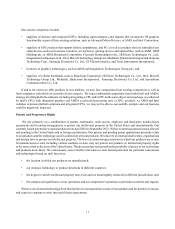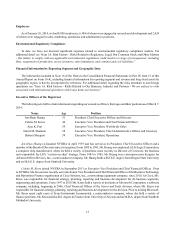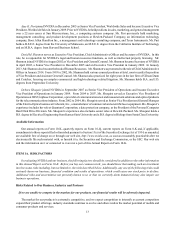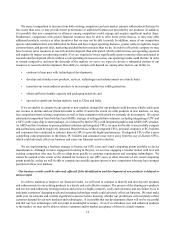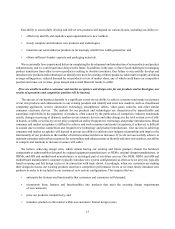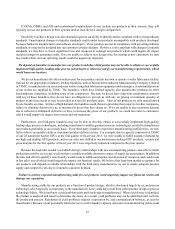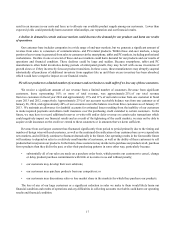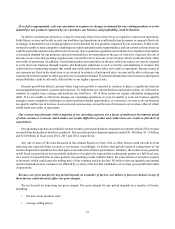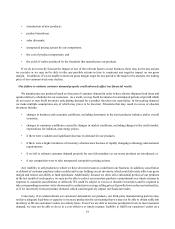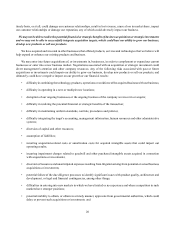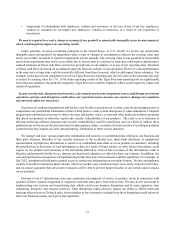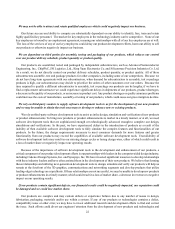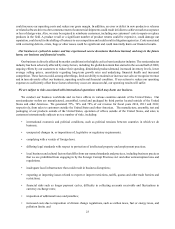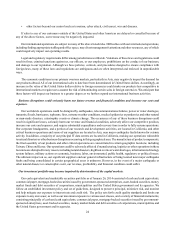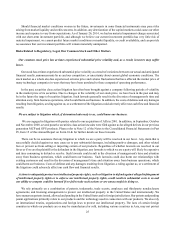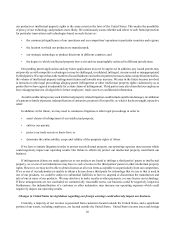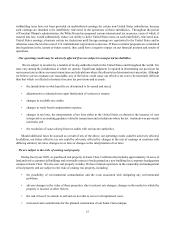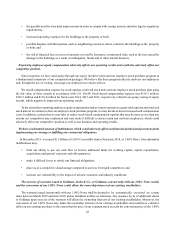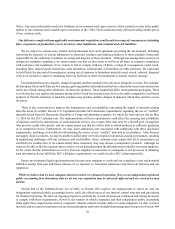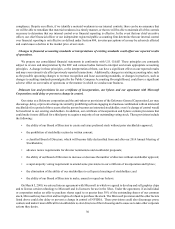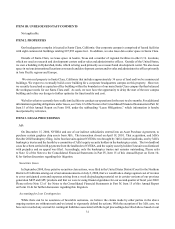NVIDIA 2013 Annual Report Download - page 165
Download and view the complete annual report
Please find page 165 of the 2013 NVIDIA annual report below. You can navigate through the pages in the report by either clicking on the pages listed below, or by using the keyword search tool below to find specific information within the annual report.21
• impairment of relationships with employees, vendors and customers, or the loss of any of our key employees,
vendors or customers or our target's key employees, vendors or customers, as a result of our acquisition or
investment.
We may be required to record a charge to earnings if our goodwill or amortizable intangible assets become impaired,
which could negatively impact our operating results.
Under generally accepted accounting principles in the United States, or U.S. GAAP, we review our amortizable
intangible assets and goodwill for impairment when events or changes in circumstances indicate the carrying value may
not be recoverable. Goodwill is tested for impairment at least annually. The carrying value of our goodwill or amortizable
assets from acquisitions may not be recoverable due to factors such as a decline in stock price and market capitalization,
reduced estimates of future cash flows and slower growth rates in our industry or in any of our reporting units. Estimates
of future cash flows are based on an updated long-term financial outlook of our operations. However, actual performance
in the near-term or long-term could be materially different from these forecasts, which could impact future estimates. For
example, in the most recent impairment test of our Tegra Processor reporting unit, the fair value of the reporting unit only
exceeded its carrying value by 17%. If the future operating results of the Tegra Processor reporting unit are significantly
lower than our estimates, the goodwill assigned to Tegra Processor could be impaired, which would negatively impact our
results of operations.
System security risks, data protection breaches, cyber-attacks and systems integration issues could disrupt our internal
operations, and any such disruption could reduce our expected revenue, increase our expenses, damage our reputation
and adversely affect our stock price.
Experienced computer programmers and hackers may be able to penetrate our security controls and misappropriate or
compromise our confidential information or that of third parties, create system disruptions or cause shutdowns. Computer
programmers and hackers also may be able to develop and deploy viruses, worms and other malicious software programs
that attack our products or otherwise exploit any security vulnerabilities of our products. The costs to us to eliminate or
alleviate malicious software programs and security vulnerabilities could be significant, and our efforts to address these
problems may not be successful and could result in interruptions, delays, cessation of service and loss of existing or potential
customers that may impede our sales, manufacturing, distribution or other critical functions.
We manage and store various proprietary information and sensitive or confidential data relating to our business and
third party business. Breaches of our security measures or the accidental loss, inadvertent disclosure or unapproved
dissemination of proprietary information or sensitive or confidential data about us or our partners or customers, including
the potential loss or disclosure of such information or data as a result of fraud, trickery or other forms of deception, could
expose us, our partners and customers or the individuals affected to a risk of loss or misuse of this information, result in
litigation and potential liability for us, damage our brand and reputation or otherwise harm our business. In addition, the
cost and operational consequences of implementing further data protection measures could be significant. For example, in
July 2012, unauthorized third parties gained access to certain user information on our online forums. We have strengthened
security in an effort to minimize future attacks. However, hackers may continue to target our security controls in the future,
and we cannot guarantee that our security measures will be able to prevent future breaches of our website and/or attacks
on our products.
Portions of our IT infrastructure also may experience interruptions of service or produce errors in connection with
systemic failures, systems integration or migration work that takes place from time to time. We may not be successful in
implementing new systems and transitioning data, which could cause business disruptions and be more expensive, time
consuming, disruptive and resource-intensive. Such disruptions could adversely impact our ability to fulfill orders and
interrupt other processes. Delayed sales, lower margins or lost customers resulting from these disruptions could adversely
affect our financial results, stock price and reputation.


